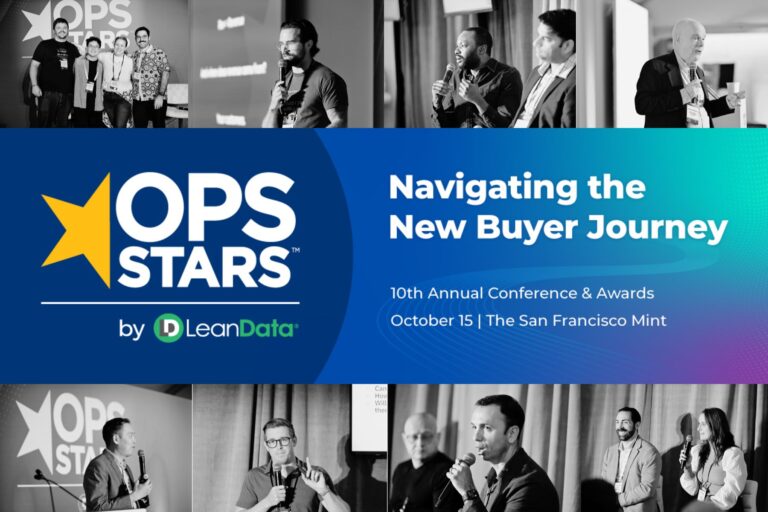Nearly every B2B revenue team professional is familiar with account-based marketing (ABM), a go-to-market strategy where an organization identifies and engages with individual customer accounts as markets of one. In fact, according to HubSpot’s Not Another State of Marketing Report 2021, 70 percent of marketers reported using ABM in 2021, up 15 percent from 2020.
Greater adoption of effective ABM has been a trend over much of the past decade. But, the onset of the pandemic in 2020 really spurred its growth. In the Terminus State of ABM Report, 23 percent of survey respondents had no ABM initiatives in 2019. By 2020, that number had dropped to just 5.8 percent.
The benefits of ABM are clear. If you’re not completely convinced, consider the following:
- Eighty-seven percent of B2B marketers agreed ABM delivers a higher ROI than other marketing activities (ITSMA)
- Companies deploying ABM generated 200% more revenue for their marketing efforts compared to those that don’t (FlipMyFunnel)
- Companies using ABM for at least one year realized a 10 percent increase in revenue, while 19 percent of companies reported revenue growth of over 30 percent (DemandBase)
- Ninety-one percent of marketers who use ABM indicated larger deal sizes, with 25 percent stating their deal size being over 50 percent larger (SiriusDecisions)
There’s no doubt that ABM works. Furthermore, there’s no doubt that nearly every B2B organization deploys ABM in some format.
A question remains, though. Namely, “How do you implement effective ABM?
An ABM confession
At LeanData, we’re all about empowering account-based motions. Our industry-best lead-to-account matching solution is fundamental to ABM success, and LeanData Engagement Analytics is mission-critical for advancing deals to closed/won.
But, here’s the thing: At LeanData, we haven’t been nearly as effective in ABM initiatives as our customers.
We’ve had some success. But, truth be told, our ABM efforts have been inconsistent and disjointed, resulting in a long series of starts, stops and restarts.
Internally, we’ve decided to do something about that in 2022. And, in an effort to be transparent and provide both thought leadership and a blueprint for ABM success, we’re going to let you in on the journey, told through blog posts, short videos and, ultimately, an eBook.
You’re invited to be a “fly on the wall” as we march toward sustainable ABM success, starting right here, today. We’ll be transparent and honest, even when it hurts, and you’ll experience the trials and tribulations as we do.
So, buckle up. We start our journey now!
Recognizing there’s an opportunity
In LeanData’s GTM motions, we segment customers into the following categories:
- Large Enterprise (over 4,500 employees)
- Emerging Enterprise (1,001 to 4,500 employees)
- Middle Market (251 to 1,000 employees)
- Emerging Commercial (under 250 employees)
Where LeanData excels is in the Emerging Commercial and Middle Market segments. The large majority of LeanData’s over 1,000 customers fall into those two categories. While there have been noticeable big wins in the Large Enterprise segment, qualified pipeline in the segment is inconsistent and remains a challenge.

The uncaptured opportunity in the Large Enterprise segment required senior leadership to examine possible root causes. One that bubbled to the top early and often was LeanData’s established GTM motions – they were the same motions for Large Enterprise as they were for Emerging Commercial.
LeanData has tended to rely on a hybrid GTM motion, a mix of Inbound and Outbound, with a pinch of ABM periodically added to the recipe. Marketing worked hard to make an impression with its collateral and campaigns, and Sales, led by the Sales Development team (SDRs), worked to set up meetings.
Different segments require different ABM motions
In the Emerging Commercial space, where smaller companies have flatter organizational hierarchies, LeanData has been extraordinarily successful. However, those same motions, when applied to Large Enterprise accounts and their broad buying committees, resulted in much longer sales cycles and lower conversion, both leading to slower time to revenue.
LeanData’s one-size-fits-all approach to marketing delivered different results to the Sales team. Our Emerging Commercial/Middle Market team is blessed with a consistently strong pipeline and busts quotas every quarter. The Emerging Enterprise/Large Enterprise team receives a highly variable pipeline and fights much harder to achieve quotas.
All the metrics indicated the same conclusion: LeanData needs better marketing for the enterprise segments.
A natural corrective action was to look at leveraging LeanData partner motions already in play in its GTM strategies. That team is rapidly expanding, and its broader reach is delivering meaningful results, feeding more and more business to the enterprise team. It’s a strong partner arm, but it is still putting all its programs in place. It’s poised to make significant contributions in the near-term future.
However, to hit its 2022 revenue targets, LeanData needs more enterprise pipeline now. Through the process of introspective self-examination and elimination, it was determined that LeanData needs a stronger account-based strategy.
Learning from the past
Doug Bell is an experienced ABM marketer and yet even he’s convinced he has messed ABM up in the past.
Yes, even the best of the proven professionals still struggle with getting the most out of account-based strategies.
In his past, Doug felt the cause of an underperforming account-based motion was that he attempted to develop ABM expertise within the competency set of an Inbound content marketer. He and his team worked tirelessly to iterate using a one-to-many approach, and their bias led to blindspots that limited their effectiveness.
He saw many of the same competencies within the LeanData Marketing team. Across the organization, there’s a lot of proven professionals with abundant Inbound motion experience. There is strength at the top- and middle-of-funnel, and strong foundational pillars within the Middle Market and Emerging Commercial segments.
LeanData is powerful in those segments. But, within the Large Enterprise and Emerging Enterprise segments, the team has relatively less demonstrable experience.
A giant leap forward with just one small step
Doug recognized LeanData was short of internal expertise with effective ABM motions. He likened it to playing guitar. Collectively, we might know chords and progressions, but we were short when it came to experience with live gigs. What we need is guitarists who have done a lot of gigging.
Enter Winning by Design, a global B2B revenue consulting and training company with proven experience in empowering recurring revenue teams to architect sustainable growth.
LeanData selected Winning by Design to help guide our ABM strategy due to a strong feeling of kinship with its mission-driven organization. It’s a brand that has built the reputation of being great designers of GTM motions that lead to world-class customer experiences. Their team fits the LeanData team like interlocking fingers of two hands.
First up for the collaboration is conducting an ABS Diagnostic assessment – an analysis of account-based strategy and prospecting programs across targeting, prospecting skills, metrics, tech stack, program orchestration and measurement.
Sharing the journey to effective ABM
While we’re just getting started, we’re pleased to share our journey with you, providing an unflinching look the entire way. The aim is our learning will lead to your learning, creating a rising tide that lifts all boats.
Stay tuned for the next posts in our ongoing series:








